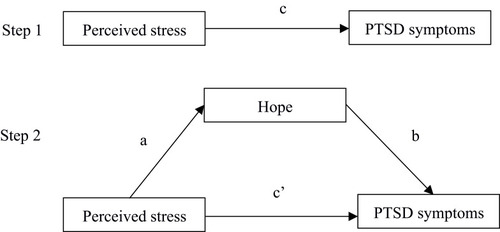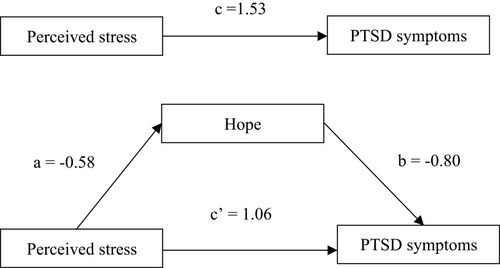Figures & data
Figure 1 Theoretical model of the mediation of hope on the association between perceived stress and PTSD symptoms. c: total effect of perceived stress on PTSD symptoms; a: association of perceived stress with hope; b: association between hope and PTSD symptoms after controlling for the covariate; c’: direct effect of perceived stress on PTSD symptoms after adding hope ad mediator.

Table 1 Demographic and Clinical Characteristics of Participants and Result of Univariate Analysis
Table 2 Correlations Among PTSD, Hope and Perceived Stress
Table 3 Hierarchical Multiple Regression Analysis Results
Figure 2 Model of the mediation of hope on the association between perceived stress and PTSD. c: total effect of perceived stress on PTSD symptoms (c = 1.53, p < 0.01); a: association of perceived stress with hope (a = −0.58, p < 0.01); b: association between hope and PTSD symptoms after controlling for the covariate (b = −0.80, p < 0.01); c’: direct effect of perceived stress on PTSD symptoms after adding hope ad mediator (c’ = 1.06, p < 0.01). Educational level, smoking, drinking alcohol, familial inheritance and distant metastasis were covariates.

